 |
 OPCMHVisitor No.: |
HISTORY OF WORK POINT BARRACKSby Jack BatesPART 5 — 1919 to 19391928Brigadier General A.G.L. McNaughton takes command of Military District No. 11 at Work Point Barracks in 1928. He promptly constructed a swimming pool behind the Officer’s mess which tides filled and emptied – an innovation for the period. Portions of the walls of the pool remain today. Also at Work Point in April, came George Pearkes, appointed as Staff Officer to MD 11. This was fine with him as he had been married at St. Paul’s Garrison Church on August 26, 1925 to Blytha Copeman, and his wife’s parents were still living in the Victoria area. He was to remain headquartered at Work Point until the fall of 1929, when they relocated to Kingston, Ontario. Daily Colonist COL. HOLMES DIES IN CITY Was Twice Commanding Officer at Esquimalt, HAD LIVED TO ADVANCED AGE The funeral will take place tomorrow afternoon of Colonel Josiah Greenwood Holmes, former commanding officer of this military district. The service will be held at 2 o’clock at St. Mary’s Church, Oak Bay, Rev. A. deL Nunns officiating. Colonel Holmes, who was believed to be the last surviving officer of the original permanent force in Canada, died on Sunday evening at the residence of his son, Colonel W.J.H. Holmes, D.S.O., 1286 Roslyn Road, in his eighty-third year. IN FENIAN RAID Born in 1845 at St. Catherines, Ont., of English parentage, Colonel Holmes was educated at Grantham Academy. While a youth he joined the 19th Regiment Lincoln Militia and was posted as ensign when twenty years of age. With this organization he took part in the Fenian Raid campaigns in the Niagara Peninsula, in the years 1866 and 1870, receiving the medal with two clasps. After serving two years as Captain with the St. Catherines Garrison Artillery, Colonel Holmes entered the permanent force in 1871 as a lieutenant in A Battery, Canadian School of Gunnery, later Royal Canadian Artillery, formed when Imperial forces were withdrawn from Canadian points other than Halifax and Esquimalt. Twelve years of service brought promotion to the rank of Colonel. Col. Holmes attracted wide attention among artillerymen in 1878, when he won the first prize offered by the Dominion Artillery Association for an essay on “The Organization of Equipment and Localization of Artillery for the Dominion of Canada.” COMES TO COAST He came out to Esqumalt in the year 1883, to organize the coast defences, with the rank of acting Deputy Adjutant General. For ten years Colonel Holmes directed the military affairs of this district, among his active service duties being command of the military expedition sent against the Skeena Indians in 1888. In 1893 he was transferred again to the east, where he commanded at Winnipeg and at London, Ont., where he was D.O.C. from 1898 until 1901, when he returned to Victoria and resumed charge of Military District No. 11. He retired from active service in 1909. Colonel Holmes married Elizabeth Kew, of Beamsville, Ont., in 1870, who died two years ago. He is survived by two sons, Colonel W.J.H. Holmes, D.S.O., of Victoria and Mr. H.A. Holmes of the Canadian bank of Commerce head office at Toronto; three daughters, Mrs. Cedric Hay of Moss street, Mrs. E.A.C. Studd of Vancouver, and Mrs. B. Garland Ashley of Tonopah, Nevada. There are six grandchildren. A MILITARY PIONEER Colonel J.G. Holmes, so well known to Victorians for so many years, who has just passed away, was a military pioneer in this country. By this death there has gone the last of the group of officers of the original Permanent Force of the Dominion. Colonel Holmes was a pioneer in that he assisted in the establishment of a military organization, and, as an organizer in succeeding years, in strengthening and consolidating the Permanent Force he did excellent work. His name is closely identified with the Permanent Force at Work Point for he was the first commanding officer of this Military District. Not long after he came here it was determined to organize defences at Esquimalt and the task was allotted to the late Colonel Holmes. It was in the hands of a most efficient officer because Colonel Holmes was an authority on artillery. After leaving here he commanded at Winnipeg and at London, Ontario, and then returned to Esquimalt to take up again the duties of District Officer Commanding, a position which he held from 1901 until his retirement in 1909. Colonel Holmes was always cordially liked during his administrative life here, and his qualities as a soldier were respected. He inspired discipline among those under him. It is not too much to say that he laid the foundations of the administrative service at Work point which as been carried on so ably by his successors. His efficiency will always be remembered in Canadian military records. In this community he was a citizen of the highest standing, and all who knew him, and his circle of friendships was a wide one, will extend the deepest sympathy to the members of the family. May 17, 1928 COL. J.G. HOLMES OBSEQUIES HELD Military Funeral Accorded Former District Officer Commanding Here The funeral of Colonel Josiah Greenwood Holmes was held yesterday afternoon, the remains being interred at Ross Bay Cemetery with full military honors. The following acted as pall bearers: General Sir Percy Lake, General A.J.L. McNaughton, D.O.C., Colonel (Dr.) E.C. Hart, Commander C. Slingsby, Mr. R.E. Brett, Mr. Hugh Peters, Major A. Mulcahy, and Mr. Herbert Carmichael. Rev. A.E. del Nunns, officiated at the service at St. Mary's Church, Oak Bay, in the presence of a large attendance. Mrs. Chambers represented the Pro Patria branch of the Canadian Legion. The hymns sung were: “For All The Saints, Who From Their Labors Rest,” and “Abide With Me.” The Twenty-Third Psalm was rendered. The Dead march in “Saul” was played as the casket was removed from the church. The casket was draped with the Union Jack, and conveyed on a gun carriage in charge of Sergt. H.K. Scrase. Captain G.E. Wells was in charge of the firing party from the P.P.C.L.I., and Bugler Sgt. Bates sounded “The Last Post.” PPCLI regimental training was available at Sarcee Camp; in addition “B” Company was able to participate in combined manoeuvres at Maple Bay with the Royal Navy, the Royal Canadian Navy and the Royal Canadian Air Force. Then a Staff Officer, GR Pearkes attended this event.
. At Fort Macaulay there was 1 – 6 inch Mk VI (obsolete) disappearing gun (sold to Norway), 2 – 6 inch Q.F. Naval Mountings, and 2 - 13 pounder Anti Aircraft guns in place (Practice Battery), later 2 - 12 pounder guns were added as another practice battery. Esquimalt Electoral District Click here to view Register of Voters, Esquimalt Electoral District 1928 (PDF), courtesy Esquimalt Archives, received January 28, 2015. Available for research purposes. ESQUIMALT MUNICIPAL COUNCIL MINUTES BOOK A letter from the Chief of Police was read reporting the occurrence of a fire in an old building on Paradise Street on June 20th and stating that without the timely assistance of the military considerable loss might have been caused. COLONIST HISTORIC BELL DOOMED The old wooden bell post standing just inside the gate of H.M.C. Dockyard at Esquimalt, is to be removed, severing another link with the early history of the naval base. The present gate post was erected in 1900, and was shortened fifteen feet in 1923 on account of decay setting in. How old the bell is naval authorities are unable to determine, it having been in many different positions within the dockyard prior to 1900. The cupola on top of the post houses the bell, which was formerly used to notify workmen of the time, for fire alarms and for emergencies. Cords run down the side of the post to set the bell in motion. It has been supplemented by a modern electric siren, raucous in tone but savoring of modern day speed and efficiency.
WORK POINT BARRACKS AERIAL Click here to view aerial pictures of Work Point in 1928 (PDF). 1929Andrew G.L. McNaughton, on promotion to Major General, was appointed Chief of the General Staff and relocated to Ottawa in 1929. To his credit, post WW1, he was attested to be “Probably the best and the most scientific gunner of any army in the world.” At age 41, he was also the youngest C.G.S. in Canadian history. He was to serve his country in many other military and political posts to follow. He passed away in 1966. There is a street named in his memory in Esquimalt in Walking Tour #6. Daily Colonist Learning to Know History of Locality Last Sunday afternoon, October 6, an interesting walk was taken by a group of young people who have banded themselves together for the purpose of studying the natural and historical features of Victoria and its environs. Under the leadership of Mr. C.C. Pemberton, president of the Natural History Society and a member of the local features committee of the British Columbia Historical Association, the party assembled at south end of the Post Office, where they viewed the photograph of old time Victoria which has been set up there by Mr. French, and contrasted the present with the past, while observing the natural features brought out in this fine picture. Following the Wharf street waterfront, they came upon the site of the old fort, and found sprouts of oak marking the places of the fine old trees whereon, according to Sir Henry Crease, Sir James Douglas posted the notices proclaiming the erection of the fort; this clump of scrub oak was seen near the Marine and Fisheries building. The old Hudson’s Bay Company’s store and wharf, Bastion Square, historic places in the early days when passengers arrived from London and San Francisco, were visited. The old Hudson’s Bay store is said to have been built of brick which came from England around the Horn, and it was here that all the shopping was done in the early days. Among the old buildings is the site of the first Colonist office, and much interest was taken in attempting to decipher the inscriptions on the walls of the stores, some of which are quite clearly visible. Proceeding to Johnson street, a picture of the one-time beautiful ravine was conjured up, but having passed from its stage of flowery banks and running stream to an objectionable insanitary ditch, it had been gradually filled in. The harbor was crossed, over the new bridge, while reminiscing of the time of the first bridge, and later the ferry boat by which one crossed for a fare of twenty-five cents. HISTORIC MACAULEY PLAINS The Indian Reserve, now the Industrial Reserve, was contrasted in its present flourishing condition with the old cedar huts, which were portrayed in Paul Kane’s wonderful painting of Fort Victoria, showing also the Indian war canoes, with vociferating crews, in the foreground of the picture. Skirting the shore line to Head street, a curious oak was observed near the golf links, an oak the trunk of which has grown to envelop the rock masses in an extraordinary manner. Some fine old Douglas firs were next observed, showing a peculiar feature; where the bark had been cut off the trunk the vigor of the trees had supplied strange burls and healings. From the heights of rock at this point the aircraft and traffic of the harbor were seen; two planes alighted while the party kept to the eminences. Continuing on their way, the contrast between pines and firs were studied; one fine old tree, much damaged, had assumed a peculiar trident shape following the loss of its stem and upturning branches; the causes of this condition were discussed. McLaughlin Point, named after the famous Dr. John McLaughlin, in charge of the Western Division of the Hudson’s Bay Company, was next reached; thence to Macaulay Point, named after Donald Macaulay, in charge of Viewfield farm for the Puget Sound Agricultural Society (H.B.C.), who was accidentally drowned in the Esquimalt Harbor in 1868. Here the party paused in admiration of the remains of the beautiful stretch of woodlands, and the natural features of dry open plain contrasted with the moisture laden wooded portions; their meditations were disturbed by shouting, which showed them their danger of being bombarded by golf balls. Moving on, a fine strand of native poplars (Trichocarpa) was discovered, a fallen trunk measuring twenty feet in circumference. Soon the party left the road, and reached Saxe Point, which is named in association with Coburg and Gotha Point in Esquimalt Harbor, after H.R.H. Prince Albert of Saxe-Coburg and Gotha, Royal Consort of Queen Victoria. The great length of Douglas fir roots, extending along the ground in search of water, was commented upon. One battered weird fir showing almost human intelligence sending branches out of the wind; these in turn throw up young shoots to endeavour to replace the original stems, battered to pieces in the wind. Very striking specimens of large arbutus trees were much admired with their bright red stems and vivid green foliage; it was also easy to see from their straggling shape that they had originally grown in a forest of dense firs and had successfully battled for light with their former competitors now dead and gone. Further beautiful woods showed many places of plant life, among them weird living stumps, causes of which aroused much controversy in early ages in Europe. AT NAVAL YARD In one of the streets traversed, a beautiful archway formed by two arbutus trees, due to another victorious contest for light as a consequence of their ability to dodge sideways in chase of it, elicited enthusiastic admiration. The party then came to the sleepy and deserted naval part of Esquimalt and listened to an account of the halcyon days of the British Naval Station. Arrived at the Dockyard, the beautiful grounds and historical buildings were visited by kind permission of the authorities, and the early days were recalled of the landing of wounded from the British and French ships which engaged the Russians in the Crimean War in 1855. The afternoon was greatly enjoyed and it is proposed to hold such meetings at intervals during the coming months. Anyone wishing to join in these expeditions may obtain further information by telephoning 1073L. 1930About 170 Officers, NCO’s and men of the PPCLI, A and B companies, attended summer camp in Sarcee in 1930. WORK POINT BARRACKS
COLONIST PRINCESS PATS HIGH AT SHOOT Work Point Regulars Capture Inter-Service Meet – Dauntless Team Second “B” Company of the Princess Pats won the inter-service meet shoot held yesterday at Heal’s Range with the total of 1,087, H.M.S. Dauntless was second with 932, while the Navy was third with 927. Captain Walls, of the Pats, was in great form and registered the highest total of the day with 129. P.O. May, of the Dauntless, made the second beat score with 127. Open sights with no slings were used during the meet. Results follow:
1931No. 11 Detachment R.C.E. was renamed 17 Fortress Company, C.E. (N. P.) and remained as such until 1939. (Originally located at Signal Hill, it was responsible for manning searchlights on the coast, Rodd Hill and Black Rock, not R.C.E.) In the spring of 1931 “B” Company was sent from Victoria to Vancouver to support the civil authorities but fortunately the situation improved overnight and military aid was not required.(They were hustled out of Work Point on to a Destroyer in full battle order with ball ammunition but never got off the ship in Vancouver)
COLONIST WORK POINT HOSPITAL GUTTED BY FIRE Entire Military Force Battles Blaze for an Hour Before Turning in Alarm Corporal G. Whitlock of P.P.C.L.I., Overcome Volunteers Risk Lives to Save Valuable Records; Some Are Lost Fire which broke out in the basement of the Military Hospital at Work Point Barracks at midnight swept the building, gutting the interior. Thirteen patients in the institution were removed to safety in the barracks. Several soldiers were overcome in fighting the fire, including Corporal G. Whitlock, P.P.C.L.I. He returned to the scene after receiving first aid in the guard room. It was about midnight when smoke was observed issuing from the basement. The fire alarm was sounded and the troops at the barracks were called to fight the flames. Details were told of to assist Major J.A. Murray, M.D., and Sister Macdonald and other nurses in removing the patients from the burning building to the barracks, where temporary accommodation was fixed for them. STIFF FIGHTS The soldiers under the command of the offices encountered a stiff resistance from the flames, and it was decided to call upon the Esquimalt fire brigade, an alarm being turned in at 1:15 a.m. For more than an hour after the arrival of the municipal fire brigade, the firemen and soldiers continued their efforts to extinguish the fire which gave rise to dense smoke within the building, hampering effect fighting. At 2:30 a.m. the fire was declared to be under control. A call was sent in to the city for additional equipment, but as the fire was outside of the municipal limits, apparatus could not be sent to the scene. SAVED RECORDS The Military Hospital was a two story wooden building, erected a number of years ago. The dense smoke that filled the interior, to which the fire was largely confined, made it impossible at the time of going to press to estimate the damage. Major Murray, after assisting in the removal of the patients, at great personal risk, led volunteers into the record-room in an endeavor to save the valuable documents housed in the building. While a number of records were saved by the daring of these men, a large number of valuable records, it was reported, were destroyed. Click here to view plan of Work Point Barracks Station Hospital - 1904 (PDF)
After the fire (Building # 1004) the first of the three 1888 wood frame buildings just inside the Work Point Barracks Head Street gate, became the hospital ward. The Royal Canadian School of Infantry Operations moved to Fort Macaulay until the new hospital was built. TIMES PATIENTS ARE ALL REMOVED SAFELY AS HOSPITAL GUTTED Two-story Structure at Work Point Barracks Ruined in Midnight Fire; Thirteen patients at Work Point Barracks Military Hospital were removed safely when fire broke out shortly after midnight and destroyed the interior of the two story structure. The building was practically ruined, the damage amounting to $4,000 or $5,000. Soldiers stationed at the barracks were joined by the Esquimalt fire brigade in fighting the blaze which was brought under control after a two hour battle. The city fire department sent out equipment when called upon later and assisted in completely extinguishing the flames. STARTED NEAR FURNACE Removal of the patients was effected before the fire reached its height. Smoke was first noticed issuing from the basement, the blaze apparently originating in the central portion of the building near the furnace. The barracks fire alarm was sounded and the soldiers turned out to combat the flames. Squads were detailed under Major J.A. Murray, M.D., and Sister Macdonald to carry the patients out, all being successfully transferred. Shortly after 1 o’clock a call was put into the Esquimalt fire department which responded with additional equipment and firemen who supplemented the efforts of the soldiers. Gradually the blaze was extinguished. The walls were still standing but the interior, consisting of two main bedrooms, the nurses room, dispensary and kitchen were either burned out or damaged by water and smoke. Hospital records were water soaked and some were lost, despite a daring dash by a party of men into the burning building to retrieve some of them. It was the second fire of large proportions to occur here during the week, Cameron’s Sawmill having been destroyed early Wednesday morning. ESQUIMALT DOCKYARD Provided to me by Gary Restell in June of 2022, this is a 1931 aerial photograph of the Dockyard taken at 3000 feet as a PDF. 1932In 1932, the national government, in an attempt to relieve some of the suffering of the unemployed, introduced the first of the Dominion Unemployment Relief Projects. Of particular benefit to Esquimalt, orders were issued for the renovation and construction of barracks which included new facilities for Work Point.(The huts to house them were located at Macaulay Point and they were issued cardigans and deck shoes and paid 25c a day, and were employed bulding camp sites etc).
Times COL. J.A. HALL DIED YESTERDAY Distinguished Scientist and Soldier Succumbs at Esquimalt; Was Commanding Officer of Fifth Regiment and 88th Fusiliers Lieut. – Col. John A. Hall noted scientist and former Commander of the Fifth regiment, C.G.A., and the 88th Fusiliers, succumbed after a long illness yesterday at his home, “Longstone,” Old Esquimalt Road. His death removes one of Western Canada’s pioneer chemists, he having been associated with the late Frederick Moore and the late J.W. Fuller in the establishment of the former Victoria Chemical Works, the first of its kind in British Columbia and one of the first in Canada. A native of Blackpool, England, where he was born nearly sixty – three years ago, Col. Hall showed early promise as a brilliant student of chemistry and mathematics and was a gold medalist in chemistry at Owens College, Manchester. After graduating, he lectured in science at the Manchester Polytechnical School and later carried on research work at the Creighton Analine Works in England. During the early nineties, young Hall, together with Frederick Moore and J.A. Fisher, decided to pursue their fortunes abroad, the flip of a coin making them chose Canada in preference to South Africa or Australia. Shortly after their arrival here they organized and established the Victoria Chemical Works, which grew into a large enterprise, with its plant located at the Outer Wharf. The three friends remained with the firm until it merged with the Canadian Explosives Limited, which is now known as the Canadian Industries Limited, with its plant at James Island. Col. Hall was predeceased by his two partners in the undertaking. A distinguished scientist, his chemistry research won him world renown, and he was quoted quite frequently and extensively by Lunge, the noted German scientist, in his many works, which are accepted as textbooks to the chemical industry. Col. Hall is quoted particularly on matters dealing with sulphuric acid and alkali, these two chemicals having an important part in the study of heavy chemicals. In 1905 Col. Hall was made Commanding Officer of the Fifth Regiment, with which he had been associated since 1900, and in 1908 he retired to organize the 88th Fusiliers. In 1913 he commanded the Civil Aid Force, comprising 400 men, which was sent to the coal mining area of Vancouver Island of the riots. WENT OVERSEAS On the outbreak of the war, Col. Hall gave invaluable aid in recruiting troops and in 1915 went overseas as Commander of the 30th Battalion, with which was incorporated the 88th Fusiliers. After a short period in France, the British War Office recalled him for special duty as inspector of all munition plants in Great Britain. Later in the war his duties were increased to include munition plants in Canada. He did considerable chemical research work at Whitechapel for the Munitions Board during the war. He is survived by his widow here and a sister in England. The remains are reposing at the Thompson & Fetterly Funeral Home, where the funeral will take place at 10:45 o’clock, Friday morning. The cortege will proceed to St. Paul’s Garrison Church, Esquimalt, where service will be held at 11 o’clock. The body will be sent to Vancouver for cremation. May 21, 1932 MACHINE GUN TESTS TUESDAY Competitions Between Eight Regiments on Holiday at Macaulay Fort The annual machine gun competition for a shield presented in 1925 by the Maytime Celebration Committee will be held on May 24th at 1 o’clock at Fort Macaulay, and will continue during most of the afternoon. The event is expected to attract many spectators. In addition to teams from three companies of the 11th Machine Gun Battalion, whose representative headquarters are at Victoria, Vancouver and Mission City, teams have been entered from the Canadian Scottish regiment, the Vancouver Regiment, the 1st British Columbia Regiment, the Irish Fusiliers and the Westminster Regiment. The competition will be run on different lines this year as the guns will be actually fired. In addition to the shield competition there will be a contest between three companies of the 11th machine Gun Battalion for the Underwood Cup. The Shield and Underwood Cup were both won by the Victoria Company last year. In the event of wet weather the competition will be held at the Armouries. Regimental Activities of the 17th Fortress Company, Canadian Engineers; the 5th (BC) Coast Brigade, C.A.; the Canadian Scottish, and A Company, 11th Machine Gun Battalion, C.M.G.C., followed in the article. COLONIST INSPECT STORES Three Ministers of the Government, accompanied by Mayor David Leeming and other officials visited Work Point Barracks yesterday, being shown over army stores, in connection with the provision of blankets, etc., in relief camps. Hon. R.H. Pooley, K.C., Hon. R.W. Bruhn and Hon. N.S. Lougheed, with Patrick Philip, Deputy Minister of Works, made up the Government’s party, guests at the barracks. Approximately 8,000 blankets have been supplied in camps, Mr. Bruhn intimated, through co-operation between Dominion and Provincial services. COLONIST THE CHURCH OF THE BLUEJACKETS If the two sons of Princess Mary were someday in their earlier manhood to visit Victoria, they would seek out two places in Esquimalt that are sacred spots in the family annals. One is a grave with a Celtic Cross in the Naval Cemetery at Constance Cove, the other is a beautiful window near the altar of St. Paul’s Royal Naval Station and Garrison Church, Esquimalt. For in Naval Cemetery lies all that is mortal of the sailor of the family, their father’s uncle, Commander H.D. Lascelles, of the royal Navy, seventh son of the third Earl of Harewood. He was but thirty-three years of age when he died in 1869, in the early days of the British Naval Station in these northern waters. As the boys would lay a wreath at the foot of the Celtic Cross, they could not but think of all those other British boys who sailed to the far horizons of the world, whose graves, like that of their uncle’s, lie beside the sea they loved, or who were lowered in a “heavy-shotted shroud” into the deep. And as they stood in silence before the chancel window with its story of David and Jonathan, they would feel afresh the loyalty of their family and of all men British breed. Such us the church beside the Esquimalt Road. It is a church of the sailor, especially the British sailor. It was built by men of British blood, and has been maintained in the British tradition. This house of prayer is murmurous with the memories of the Seven Seas. A lifebuoy hangs on the wall. Its stained-glass windows and mural tablets tell of ships that never returned, of seamen who gave their lives for their fellow-seamen. They chronicle tragedies of naval warfare during the Great War. In this sailor’s church one almost looks for a ship hanging high, as in the ancient sailor’s church of Bonsecours in Montreal. The fact is that St. Paul’s parish, Esquimalt, has an unusual type of house of worship. There is none like it on the Pacific Coast. Its companion on the Atlantic and St. Paul’s on the Pacific are uniquely and indissolubly linked with the British Navy. BUILT SIXTY-SIX YEARS AGO First erected down by the sea half a mile away just sixty-six years ago, St. Paul’s was opened on December 14, 1866. It was a parish church indeed, but its parish was the British Empire. Its parishioners came hither from the homeland, tarried awhile and sailed away. Plymouth and Woolwich and Gibraltar and Malta and Singapore came to its doorstep. For this reason, the Admiralty gave 100 pounds sterling to the initial cost of the building, paid its rector 75 pounds a year, transported the new organ free of cost, allocate 50 pounds towards the cost of rebuilding and enlarging the church and in general played the part of the paternal uncle.
Unfortunately for the reader of this article, the photo is not St. Paul’s, it is St. Joseph’s Catholic Church at the corner of Esquimalt Road and Nelson Street. St. Paul’s is below.
Since that December Sunday sixty-six years ago, thousands of bluejackets and marines have crossed the threshold and knelt towards it’s alter. It has been the church of the bluejackets. It is a fine sight as they swing along the highway in a rhythm of blue and white and gold of the officer’s uniform. With such a congregation hearty singing is assured. Distinguished and well-known officers worshipped here, often reading the lessons, such as Sir Hedworth Lampton, in command of H.M.S. Amphion, Sir Colin Kepnel, Flag Captain to the Admiral, and not least known, Lord Charles Beresford, whose career at Esquimalt as a junior officer was crowded with stirring incidents. Mention might well be made here of that good Christian and lover of humanity, Captain J.C. Provost, who was the first to plead with church people in England for the aborigines on the Pacific Coast, 60,000 in number, he declared. It was he who had the honor later, when commander of H.M.S. Satellite, to bring out free of expense, the famous missionary to the Indians, William Duncan, and his wife. The good ship anchored in Esquimalt Harbor on June 27, 1857. Esquimalt Harbor is an anchorage rich in British story, and the church that drew part of its congregation from the ships that came and went here, was sure to become connected with the history of the Empire. So it was at the very beginning of St. Paul’s. The church was an outcome of the Crimean War. For the first naval establishment on Vancouver Island was a direct result of that conflict of Britain and France with Russia. When war was declared on March 29, 1854, the French and British naval forces were joined, with instructions to “sweep the Russian flag from off the seas and to effect this in the shortest period possible.” FIRST NAVAL CONTACT Of the Pacific fleet the English had two frigates and one paddle wheel steam sloop, the Virago. In the attack on Petropaulovski the combines fleet was a bit mauled by the Russian bear, and the wounded British sailors were brought to Esquimalt and accommodated in three small buildings that had been erected by Governor James Douglas on Perry Point, now known as Duntze Head. The war closed in 1856, but warships continued to use the harbor, until in 1864 a naval depot was established with naval stores. Next year Esquimalt Harbor was created as the Pacific Naval Station, and continued until 1905, when Canada took over her own defences and the Imperial Admiralty withdrew. The year following the creation of the Naval Station saw the laying of the foundation stone of this historic church by the sea, that for forty years on the spot and for more than a quarter of a century on another kept open house for the men who “do business in great waters.” A lot at the base of Signal Hill was given by Donald Fraser, a member of the Legislative Council of Vancouver Island. On August 30, 1866, the foundation stone was laid, Mrs. Denman, wife of Rear-Admiral John Denman, handling the trowel that day, as did another woman at the reconstructed building in 1906, Mrs. E.C. Pooley, of gracious memory. It was a great day for the church and the navy, as was December 12, the day of consecration. This was the fourth house of worship to be consecrated by Bishop Hills on Vancouver Island within seven years. Though not a state church nor on Admiralty property, it was peculiarly and Admiralty church. The band of the Sutlej headed the procession and two warships fired a salute at the close of the ceremony. Lieutenant-Governor Kennedy, the Speaker of the Council, the Rear-Admiral of the fleet, and clergy, captains, churchmen and citizens in general joined in the procession. Thus the Church of the Bluejackets began its ministry. The waters of Juan de Fuca Sound stretched away from its doorstep, and on the horizon was the kaleidoscopic beauty of the Olympic Mountains. It sentineled the vessels as they glided up the harbor and farewelled them as they sailed away. Famous warships came to anchorage here, and notable commanders, their officers and men, worshipped towards its altar. Its bell has rung at the obsequies of two monarchs and the coronation of two. From the beginning till today, what a multitude of memories centre upon this little church by the sea ! What hosts of prayers have issued from it for the dear ones far across the ocean. What intercession in the homeland for the loved ones abroad ! MANY HISTORIC LEADERS Take but the list of the six opening years of rear-admirals and naval commanders-in-chief of the Pacific Squadron: 1864-6, John Denman, Sutlej; 1866-9, Geo. F. Hastings, C.B., Zealous; 1869-70, Arthur Farquhar, Zealous; 1872-3, Chas. T. Hillyer, Repulse. Let the imagination people the intervening years with the flotilla of their successors, and thus come to the entries of the church register two years back: Sunday, June 8, 1930: Naval parties from H.M.S. Dauntless attended Matins; August 17, 1930: Naval parade of C in C., Captain and 120 ratings, H.M.S. Despatch; August 9, 1931: Naval parade from H.M.C.S Skeena, newly commissioned and arrived from England; September 11, 1932: Naval party from H.M.S. Delhi. History wrote itself rapidly and deeply in the first decade of the new church. Momentous matters in provincial, Imperial and international realms impinged upon the life of this obscure parish and left their mark upon its annals. There was a “murderous quarrel” between the Tximpsean and Nass Indians in Northern British Columbia, one of those fierce intertribal wars that devastated the aborigines so rapidly. On the right of the altar is a stained-glass window that brings it to mind, for its glass is a memorial to Frederick Seymour, Governor and Commander-in-Chief, who went north on H.M.S. Sparrowhawk to quell the disturbance and died on board ship. In the same year died Horace Douglas Lascelles, uncle of Princess Mary’s husband. Next came the “Flying Squadron, four of the ship’s frigates and two corvettes, in the spring of 1870. These vessels made a world-girdling trip which had, it was said, for its object, “the display of the British flag as a detached squadron in distant parts of the world in order to facilitate the withdrawal of our ships from foreign stations,” this action having been taken under the influence “of the present rage for economy.” May 24 came during their stay, and it was a hilarious celebration of the Queen’s birthday. At noon the roar of 168 guns crashed upon the little town with an unforgettable din. Processions and games, band playing and parties extended the merriment over two days. That the claim the homeland had made for economy was shared by British Columbia’s citizens, who were, it may be remembered, at that date suffering from the gold-mining collapse, is evident from an apologetic editorial in the Daily Colonist on the morning of the fleet’s departure. “The community is small,” said this voice of public opinion, “and times have been so bad that a worthy demonstration was beyond the means of the people.” Which shows that history repeats itself in the matter of Old Man Depression. RECALLS LENGTHY DISPUTE If money was scarce, life was not dull around Esquimalt Harbor in those days. Another notable time was when H.M.S Scout steamed into port bringing the marines who had on that day hauled down a British flag from the San Juan Island, after twelve years of joint occupancy with American troops of that disputed territory. The Emperor of Germany, to whom it was agreed by the treaty of May, 1871, to refer the dispute, gave judgement on October 21, 1872, and on November 21, 1872, the Union Jack was brought aboard the Scout. In such circumstances St. Paul’s, though a small church of a small parish, was brought into touch with events of world-wide moment. A delightful glimpse of the early days has been given by the late Mrs. E.C. Pooley, who was, as Elizabeth Fisher, the second bride to be married in the new church. “In those halcyon days of the old port a beautiful wooded road led from Esquimalt to Victoria, and it was always busy with buses coming and going, officers riding into the city to some function, or crowds of brilliantly-dressed folk coming out to tea on the flagship or to watch cricket. There was always something interesting in Esquimalt, for, besides the men-of-war, liners were constantly coming and going with hundreds of men on there way to the goldfields, or returning with small fortunes.” When the Canadian Government decided in 1906 to take over its own defences, the Imperial Squadron was removed from the station. Farewell services were held in the church as ship after ship left, according to the international and well-written “Diamond Jubilee Historical Sketch” that was brought out in 1926. The traditional associations of the church with the navy were and still are carried on. In addition, in 1911, St. Paul’s became the Garrison Church for men quartered at Work Point Military Barracks, who had hitherto paraded at St. Saviour’s, Victoria West. Now the bluejackets and the men in khaki regularly worship here.
Today the parish is completely furnished with a house of prayer, a church hall (the old rectory remodeled), a rectory that was completed August 1, 1927, and a Scout Hall opened June 12, 1929. Many improvements have been made under the incumbency of Rev. Frederic C. Chapman, B.A., twelfth rector of the church, instituted here just ten years ago, on December 17, 1922. The rector’s warden is Mr. E.W. Izard, the people’s warden being Major George Sisman. Earlier rectors were: Alexander C. Garrett, Frank H. Gribbell, J.P. Wright, H. Herbert Mogg, George Mason, William W. Bolton, W.G.H. Ellison, Stuart Clement Scholefield, C. Ensor Sharp, H. St. John Payne and Wilmot Baugh Allen. Mention should be made of the ministry of Rev. R. Dundas, who held services in the schoolhouse that was erected in 1858. THE CHURCH INTERIOR It is now fully time to enter this unique church. Within its porch hangs a beautifully illuminated invitation, adapted from Mearvy Parish, Devonshire, England: “The door of this church will generally be found open till dusk for private prayer . . . as a token of the goodwill of the parishioners towards any brethren passing through this parish who wish to visit their father’s house.” Within, one is conscious of a truly worshipful atmosphere. The spacious chancel, chastely designed windows, tasteful altar, choir and pulpit furniture, along with many mural tablets, are harmoniously with its object as a house of worship.
The mural tablets are reminders of the sea, of the navy, of the great War, of the homeland. This tablet commemorates one who died from the action of the enemy aircraft, Miss Gladys M.M. Wake, a nursing sister. This tablet honors Lieut. W.M.E. Maitland-Dougall, who was killed when in command of his submarine. Four cadets were killed on board H.M.S. Good Hope, off Coronel in 1914. The heroism is recalled of Lieut. Gerald Hayman and seven of the crew of H.M.S. Satellite, who, on September 2, 1866, formed a volunteer boat’s crew to render assistance to a shipwrecked crew off Dutch Harbor, Unalaska, and were drowned in the attempt. A lifebuoy near the eastern end of the south wall is witness to one of those impenetrable silences of the sea. In the night of December 3, 1901, accompanied with the good wishes of its friends, H.M.S. Condor put out to sea in a heavy storm. From that day to this nothing has been heard of her or her helpless crew. No rockets were seen, no messages came over the air. Vanished into the ocean’s vastness. Silence. Only a short time after, there was washed ashore a seaman’s cap, and one of the ship’s life buoys, now on the wall.
On the south wall is a panel of exquisite simplicity, with a roll of fifty-one men who made the supreme sacrifice. This panel formed part of a very choice community war shrine, erected in 1917, largely through the energy of Rev. W.W. Bolton, a former incumbent, at the west entrance of the church. One lingers here in an atmosphere as of Old England. The cover on the font, that was erected in memory of Mrs. Alstone, was made from the oak of an old Sussex watermill, and its original handle was the work of the village blacksmith. Two tablets on the north wall honor the Wake family, whose name is traced back to Hereward the Wake, the doughty warrior of Anglo-Saxon days. Two old carvings from the parish of Minterne, Sussex, are pointed out, of which the story must be told. It is this: Sitting in his pew in front of the pulpit on Armistice Sunday of 1930, W.E.A. Barclay, a member of St. Paul’s church here, was moved to plan a new pulpit in honor of his father, Rev. Canon W.G. Barclay, of the diocese of Salisbury, England. The pulpit became a memorial, for even while the son was pondering upon his filial and churchly act, his father died suddenly in the Zeals Rectory, Sussex, as he was preparing for Evensong on Remembrance Day. Only last Sunday, December 4, a new Septum Wall of oak was dedicated by Bishop Schofield to the memory of the late Lieut.-Col. John A. Hall, who was for years an active parishioner at St. Paul’s. It replaced an old-fashioned screen of fir, similar to those found in some Devonshire churches. Within the sanctuary are tablets to two former incumbents, S.G. Scholefield, who died in 1894, and Wilmot Baugh Allen, who died Ascension Day, 1923. St. Paul’s Garrison Church is a unique asset of Victoria. It has few equals in the ports of the world, and there is no church like it on the Pacific Coast. Among Victoria’s many attractions, its astrophysical observatory, Mr. Butchart’s gardens and Provincial Archives, its skylarks and all-the-year-round golf, may be ranked the Church of the Bluejackets, storied as it is with memories of those who have kept open the British pathways of the seas. J. K. Unsworth See also June 11, 1911 and November 2, 1952. 1933To quote PPCLI Col. Hugh Niven, M.C., “In 1933, we received a wire from National Defence Headquarters telling me to discharge twenty men as they did not have enough money to pay them. As I had recruited these men, I felt that I had to get them jobs. I got Eatons and Hudson’s Bay Company, Winnipeg, to take them on.” “In Esquimalt, I applied for $30.00 to buy paint to do the barrack rooms. It was refused by N.D.H.Q. and I had to go to the Navy and beg the paint.” A number of B Company PPCLI from Work Point attended the Canadian Small Arms School at Sarcee as part of the Instructor Cadre training militia from Western Canada in 1933.
THE ESQUIMALT PATRICIAN Published quarterly on the 1st day of February, May, August and November. Devoted to the interests of Patricia’s, past and present, in British Columbia and elsewhere. Con’t. The publications commenced in 1933 at Work Point Barracks, Esquimalt Station, where issues from 1 May, 1934 can be viewd on the PPCLI web site. You will find out what daily life at Work Point Barracks was like and may even find references to your relative’s activities as well ! The publications continued from Work Point to 1938 and then resumed in 1953 from Calgary. WORK POINT BARRACKS Click to view PDF of 5th Heavy Battery (P.F.) RCA dated 1933. Photo courtesy Fort Rodd Hill. 1934PPCLI PPCLI Group Photo Warrant Officers and Senior NCO’s of the PPCLI. Centre Lt. Col. Hugh Niven and to his left is Captain AW Hunt. Niven was the commanding officer of the battalion from January 20, 1932 to February 15, 1937. R Waterman is top left at the time of the photo. Whether it is in Esquimalt is a debatable point, the background buildings are not familiar. I’m not sure if it wasn’t in Winnipeg, April 14, 1934. Regardless, it is a great photo! The Esquimalt PATRICIAN SPORT AT HEAL’S Softball proved to be of great interest to all concerned, during the recent annual training. At great expense and at the cost of a terrific amount of labour, a backstop was erected in front of the Officer’s Mess, and the diamond laid out. An inter-platoon schedule was played, No. 6 Pl. taking the final honours. Some good games were also played against a local team from Keating’s Cross Roads, who used to trip in after milking to offer their challenge. GARRISON SOFTBALL LEAGUE This season saw three teams enter in the garrison Softball League. A series of home and home games was played between R.C.A., P.P.C.L.I., and the Composite. The standing at the end of a series was:
Although a three game playoff was to have been the wind up of the season, only one of these could be played owing to the departure of the P.P.C.L.I. to Heal’s Camp. The result of this game was Composites - 14 and P.P.C.L.I – 12. It is hoped that it will be possible to finish the playoffs before we start on our way to Comox. Otherwise the above decision will stand and the Cup will go to the Composites who have well and truly earned it. COLONIST DATA AND DATES OF VICTORIA AND VANCOUVER ISLAND Macaulay Point, near Victoria, was formerly known as “Sailor Point,” being given that name as early as 1847. However, in 1851, it was renamed by officers of the Hudson’s Bay Company in honour of Donald Macaulay. Mr. Macaulay was at one time in charge of the Puget Sound Agricultural Company, which had charge of one of the Hudson’s Bay Company’s farms, named “Viewfield,” of which the point now bearing his name had a portion. In 1863, Mr. Macaulay was placed in charge of the Hudson’s Bay Company’s powder magazine at Esquimalt, and accidentally drowned in Esquimalt Harbour. Daily Colonist BURIED WITH FULL MILITARY HONORS A large congregation attended the military funeral of Private Edward B. Nicholas, which took place yesterday afternoon, Rev. A. Balfour Bruce conducting the service. The hymns sung were: "Safe in the Arms of Jesus” and “Nearer My God to Thee.” A profusion of floral tributes were received. Commanding Officer Colonel H.G. Greer, D.S.T.O., attended, also H. Pearson, representing the Brittania Branch, Canadian Legion; a delegation from Pro Patria Branch, Canadian Legion; and Mrs. W. Ripley, representing Women’s Auxiliary, Pro Patria Branch, Canadian Legion. The following comrades acted as pall bearers: R. Sampson, L.R. Gibson, S.A. Morrison, S. Rowton, E.S.T. Charters and H.J. Finh. The remains were conveyed on a gun carriage in charge of Corporal Rowton to Ross Bay Cemetery, where interment took place. The firing squad in charge of Sergt. Walker, R.C.A., fired three volleys and the Last Post was sounded by Sergeant Bates. Newspaper article CELEBRATION AT ST. PAUL’S Commemorating the sixty eighth anniversary of St. Paul’s Naval and Garrison Church, Esquimalt, the first parochial union was held yesterday evening with a full attendance of members of the congregation, who gave a generous reception to an excellent musical programme presented by artists of the church and visitors. Rev Allen Gardiner, the pastor, spoke during the evening, sketching the history of the church since its erection in 1866 at the instigation of Paymaster Sidney J. Spark of the Royal Navy, an interested layman. Mr. Gardiner explained it had been necessary to rebuild the church in 1904, owing to the growing congregation, the funds for this work being raised from the navy again, as in the first instance. He spoke of the change which occurred in 1906 when the Canadian government undertook the maintenance of its own defences and the Imperial forces at Esquimalt were ordered back to England. In 1911 the congregation had been increased with the attendance of soldiers from Work Point Barracks, whose place of worship was changed from St. Saviour’s to St. Paul’s. Mr. Gardiner appealed for support of the church work and urged an increase in those desiring to worship. “We are one big happy family, but we are too loosely knit together,” he said. Engineer Commander G.L. Stephens acted as master of ceremonies, and the following contributed to the programme: H. Carven, Leading Seaman Percey Swetman, Signalman T. Williams, Mrs. R.P. Matheson, Cpl. Ross, J. Bourke, Sergt. A. Bates, Cpl. J.S. Falconer, Cpl. A.C. Bundock and a male quartette from the Arion Cliub. S. White, R. Rose, A.H. Cox and P. Hughes and Yorkie, ventriloquist. P. H. Hughes was the pianist.
THE ESQUIMALT PATRICIAN This sketch by my father, stationed at Work Point Barracks reflects on the Sergeant-Major at the time…
THE ESQUIMALT PATRICIAN SPORT One of the highlights of our sojourn at Comox was a baseball game between “B” Company and a team from the navy. The game was remarkable for the wonderful pitching of Pte. Teskey, now known as “Dizzy Dean No. 2.” This stalwart lad went on the mound for the Patricia’s and gave a real demonstration of how it should be done. His favourite was the invisible ball – or so it seemed to the Navy batters who were almost all fanned out. Apparently the only players on the field who knew where the ball was were Pte. Teskey, the pitcher, and Pte. Sugden, the catcher. ESQUIMALT PATRICIAN With the erection of new fences and the liberal splashing of the painter’s brush, Work Point is taking on a very fresh and pleasing aspect. Headquarters Building, the new Hospital and the Officer’s Block have already been repainted and work is going ahead which greatly improves the appearance of the Barracks. Indoors, work is also progressing, repairs, cleaning and renovating are the order of the day – all of which will make our quarters more comfortable. This clarifies that the new hospital had been rebuilt prior to 1934. 1935
Note: the former Work Point Barracks Guardhouse on the left and Work Point Building # 1004, straight through the gate, built in 1888, are still in place today, and no need for the cannons ! COLONIST CHURCH OBSERVES ITS ANNIVERSARY St. Paul’s Anglican Church, Esquimalt, celebrated its fifty-ninth anniversary last night when speakers reviewed the history of the church, and an illustrated lecture was given. Mr. Brander gave a talk on Jamaica which he illustrated with colored slides. Motion pictures of the church parade of H.M.S. Norfolk when that vessel was in Esquimalt Harbor last summer also were shown. A splendid programme of music was arranged while members of the congregation gave reminiscences of the church’s activities through its service to the community for more than half a century. PPCLI “B” Company Daily Orders
Victoria Times GREAT CROWD TURNS OUT TO HONOR KING GEORGE ON JUBILEE Accession Day Ceremony Here Attended By 15,000 Persons; THREE CHEERS FOR THE KING The ceremony at the buildings concluded with a Royal Salute by all the troops and then three cheers for Their Majesties. The official party next moved to a reviewing stand on Government Street in front of the Empress Hotel to take the march past. First in the procession were the war veterans, headed by the Canadian Legion band. The Fifth Brigade Band marched by playing “The British Grenadiers” and then came a smart detachment of bluejackets from Esquimalt, followed by the R.G.A. and the Fifth Brigade. All eyes were on a smart squad of the PPCLI’s in their red uniforms and white pith helmets. Then came the Canadian Scottish with pipe and brass bands and numerous military detachments. (George Wilkinson’s first parade with the 17 Fortress Company C.E.) Sea cadets, Boy Scouts, Wolf Cubs, Girl Guides and Brownies all took part in the parade. “At the rear was a group of relief camp strikers with banners demanding “work and wages.” The Lieutenant Governor took the salute from the reviewing stand. WERE CENTRE OF ALL EYES IN KING’S JUBILEE PARADE
COLONIST GUNNERS REGAIN MAY 24 SHIELD
MACAULAY POINT GOLF CLUB Esquimalt Minute Book Agreement # 263. Macaulay Point Golf Club lots acquisition By-Law between Corporation and the Golf Club. Patrician THE PERIPATETIC SCHOOL This is a sad story. One dark night, Work Point Barracks hospital catches fire. R.S. of I. gives up quarters used for junior student officers. Came U.E.R. with demand for office space. R.S. of I gives up remaining accommodation and school stores moved to Detention Barracks. Detention Barracks required (not by us). R.S. of I. moves to R.C.A.M.C. barrack room and school stores to Isolation Hospital. R.C.A.M.C. requires half of Isolation Hospital. School stores moves to marquee erected nearby. Marquee falls down (having perished from exposure). V.I. becomes more acute and stores piled in remaining front half of Isolation Hospital. Daily Colonist OLD SOLDIER PASSES AWAY Major Andrew Mulcahy Succumbs at Residence Here – Funeral Wednesday Major Andrew Mulcahy, aged seventy-five years, died yesterday, at his home, 1007 Esquimalt road. Major Mulcahy was well known to school boys of twenty years ago in his capacity of cadet instructor for city school from 1909 to 1912. He was also prominent in municipal politics, having held the post of school trustee in Esquimalt for a number of years. Major Mulcahy was born in Dublin, Ireland, and had resided here for forty-eight years. He was attached to the garrison artillery for many years, entering its service in Quebec in 1880, and served as a sergeant in the Riel Rebellion of 1885. SENT TO VICTORIA Major Mulcahy returned to Kingston following that campaign, and was appointed a sergeant instructor. Shortly after, he was sent to Victoria with “C” Battery to organize a garrison here. He was a sergeant major of the force sent north from Victoria on H.M.S. Caroline to suppress an Indian uprising in the Skeena River district, but, according to records, there was no fighting, the Indians fleeing at the sight of the red coats. “C” Battery was recalled to Quebec in 1903, and Sergeant Major Mulcahy was transferred to the Fifth regiment, Royal Canadian Artillery Corps, a month after his return east as Sergeant Major Instructor. He was identified with the Fifth regiment, which later became the Canadian garrison Artillery, until 1906, and was one of the five who represented the regiment at the coronation of King Edward VII. In May, 1910, he was granted a commission. Five years later he was appointed a captain, and on his retirement in 1919, he was gazetted a major. RELATIVES HERE Major Mulcahy is survived by his widow and one daughter, Miss Kathleen Mulcahy, at home; six sons, P.J., W.A., A.M., and R.I. Mulcahy, here; O.R. Mulcahy, in Deluth, and A. J. Mulcahy, in Whaletown, B.C.; and eleven grandchildren. (Kathleen taught at Lampson Street school). Military honors will be accorded the late soldier. Mass will be celebrated by Rev. A.B. Wood at the church of Our Lady Queen of Peace, Esquimalt, Wednesday morning at 10 o’clock. Arrangements are being directed by Sands Mortuary Ltd. December 19, 1935 MAJOR MULCAHY LAID TO REST The funeral of Major Andrew Mulcahy, who passed away at the family residence, 1007 Esquimalt Road, last Monday morning, took place yesterday morning in the Church of Our Lady Queen of Peace. Rev. Father A.B. Wood celebrated mass, assisted by William and Allan Mulcahy, grandsons of the deceased, who acted as alter boys. Relatives and the very large gathering of friends were present and the many beautiful flowers testified to the high esteem of respect in which Major Mulcahy was held. The honorary pall bearers were William Simpson, Captain Prevost, J.T. Redding, Colonel Holmes, Walter Adams, B.B. Temple, Colonel Andros and Colonel Lorne Ross. The active pall bearers were Master Gunner W.H. Mitchell, Q.M.S. R.A. Wilcox, B.Q.M.S. W. Walker, Sergeants J. Middleton, T.C. Eastick, J.D. Fraser, A.C. Ross and W. Fraser. (Beefie Eastick, Flossie Fraser, who later became Sergeant of the Detention Barracks). The casket, which was draped with the Union Jack, was placed on the gun carriage and escorted to the Military Cemetery, Esquimalt, where interment was made. |
|||||||||||||||||||||||||||||||||||||||||||||||||||||||||||||||||||||||||||||||||||||||||||||||||||||||||||||||||||||||||||||||||||||||||||||||||||||||||||||||||||||||||||||||||||||||||||||||||||||||||||||||||||||||||||||||||||||||||||||||||||||||
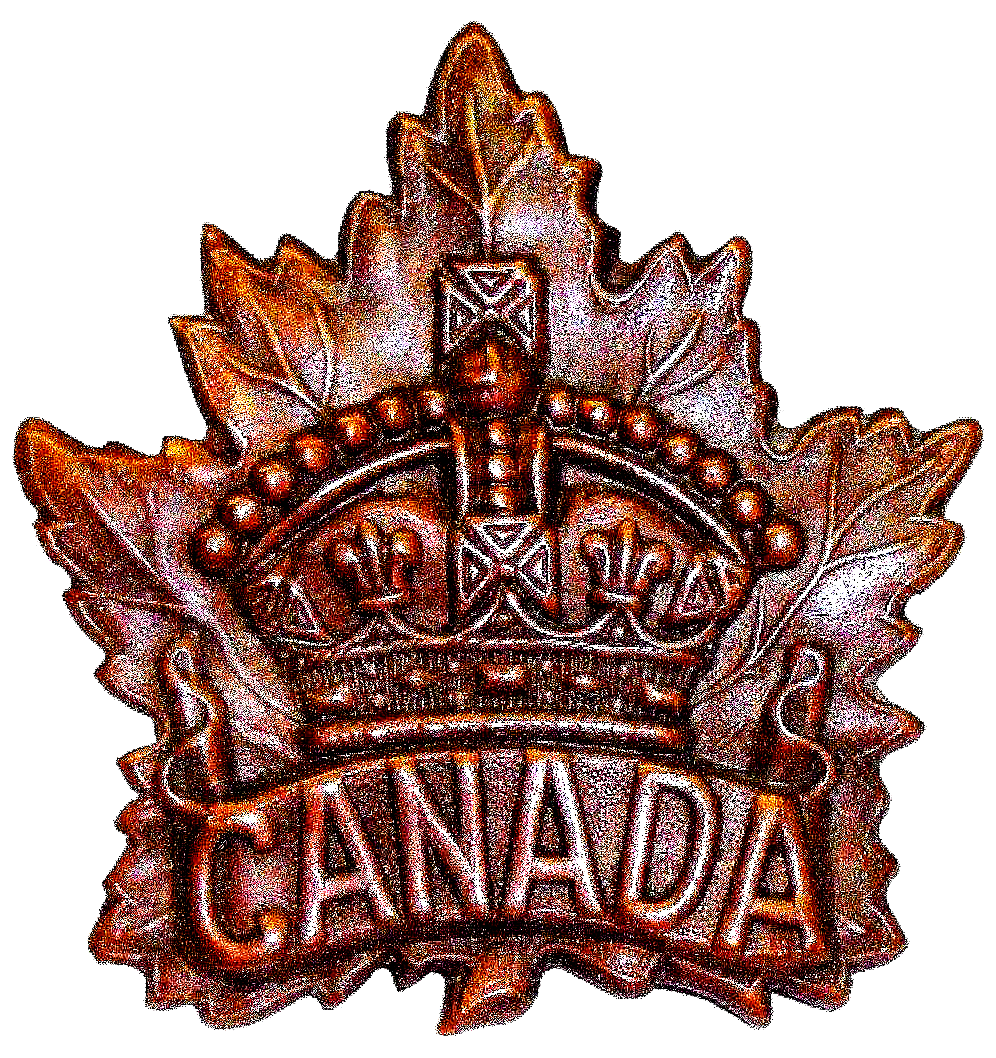
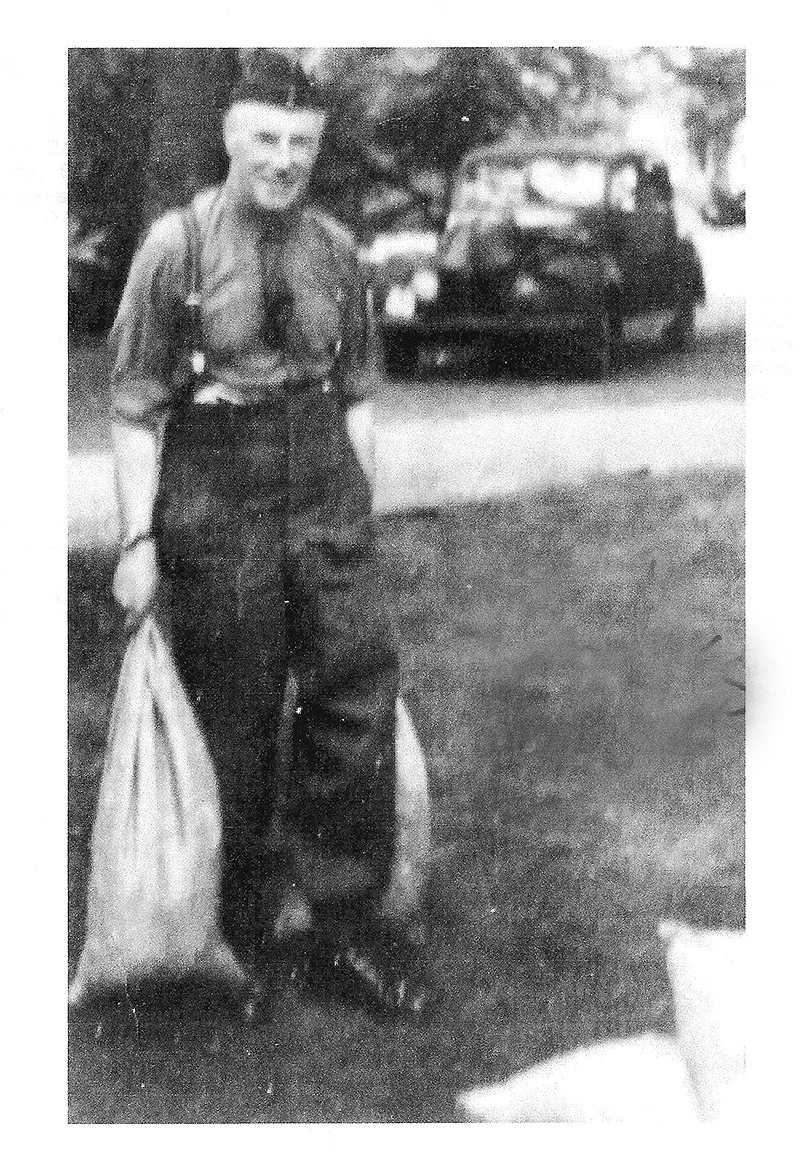
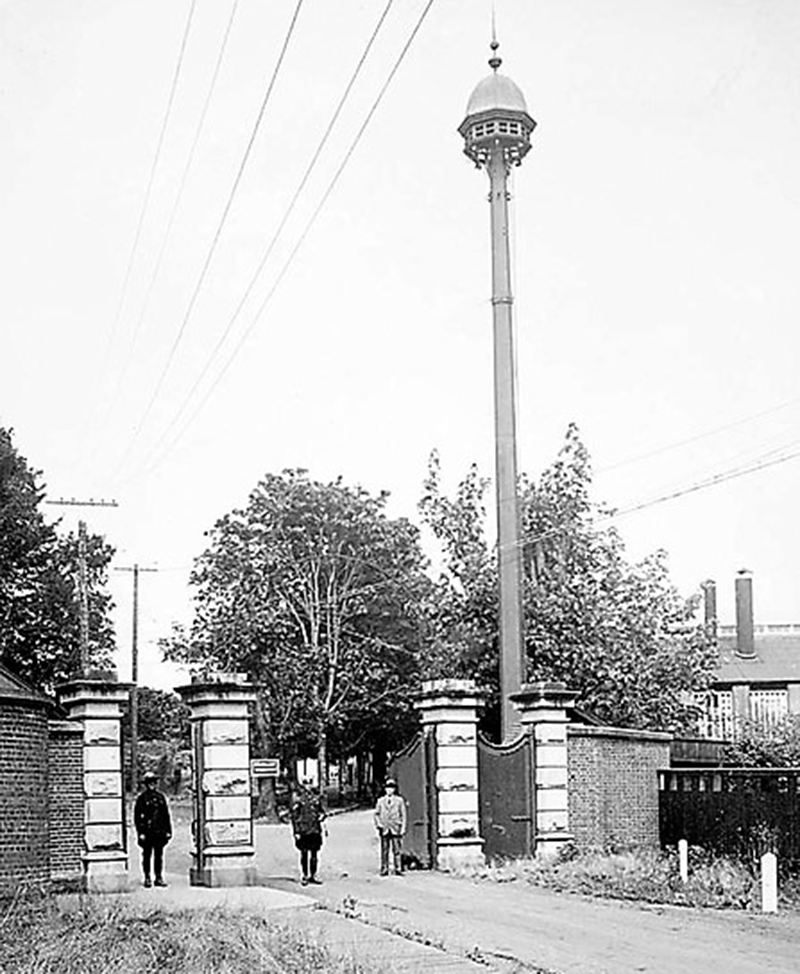

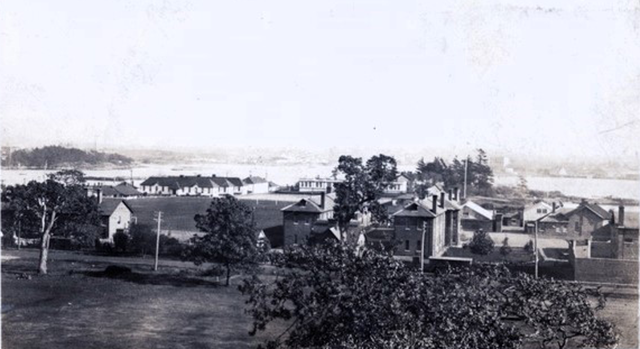
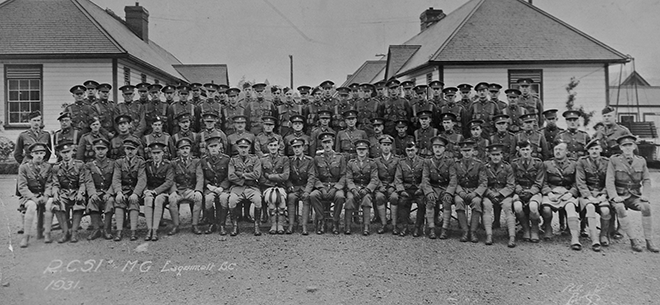
1937.png)

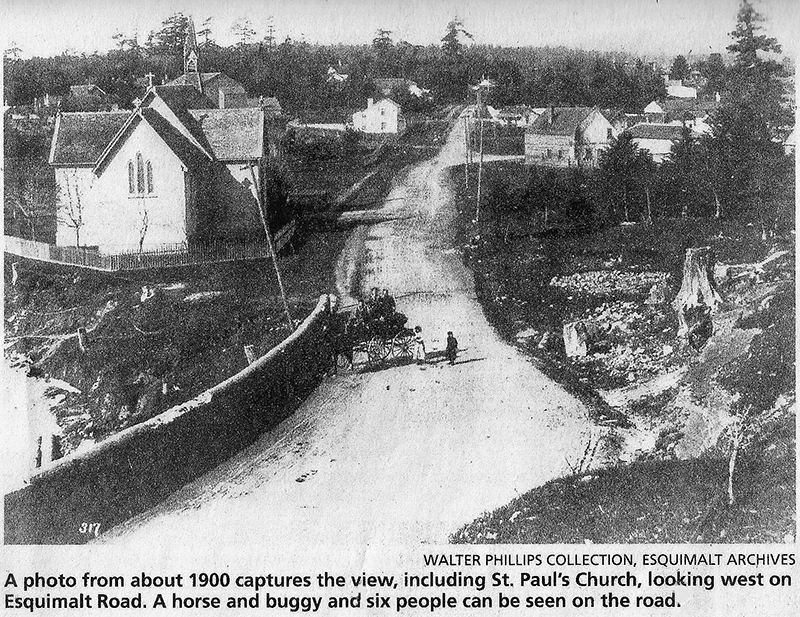
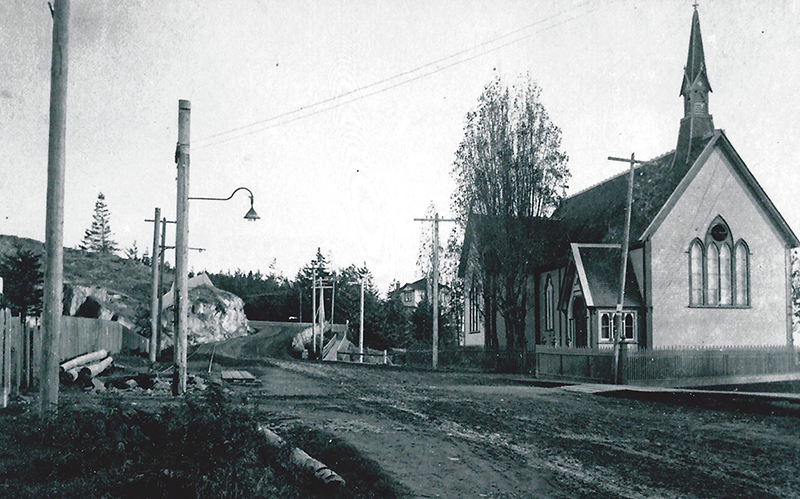
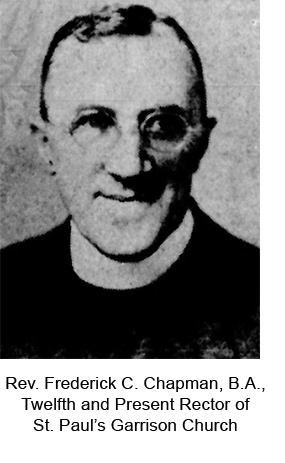 Gun practice from Signal Hill, which sent shells flying over the church, became a menace, as the rector of that day, Rev. C. Ensor Sharp, upheld before the Admiralty. In June, 1904, the site was expropriated at a cost of $5,700, and the building was removed, almost bodily, in two sections, and reconstructed, with alterations, on the property known as “The Hermitage,” the residence of Mr. George Gillespie, a little more than half a mile from the original site.
Gun practice from Signal Hill, which sent shells flying over the church, became a menace, as the rector of that day, Rev. C. Ensor Sharp, upheld before the Admiralty. In June, 1904, the site was expropriated at a cost of $5,700, and the building was removed, almost bodily, in two sections, and reconstructed, with alterations, on the property known as “The Hermitage,” the residence of Mr. George Gillespie, a little more than half a mile from the original site.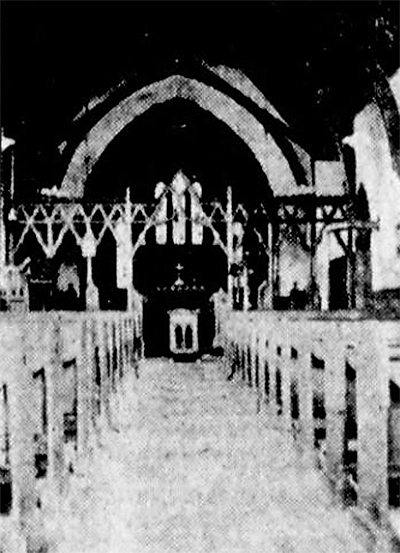
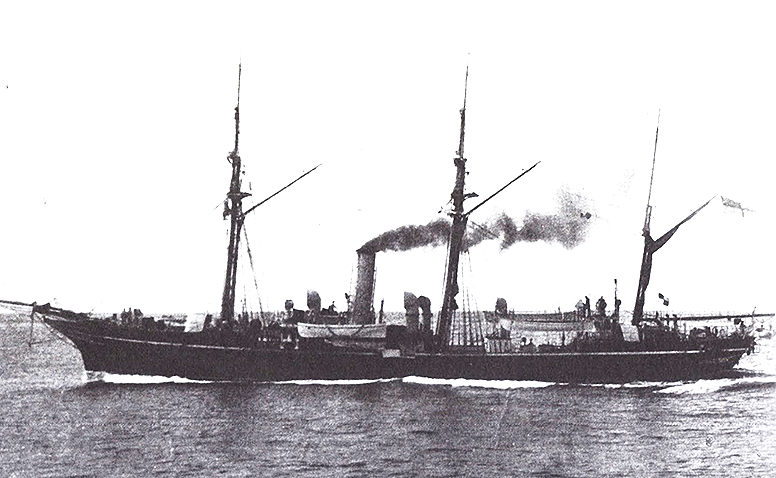

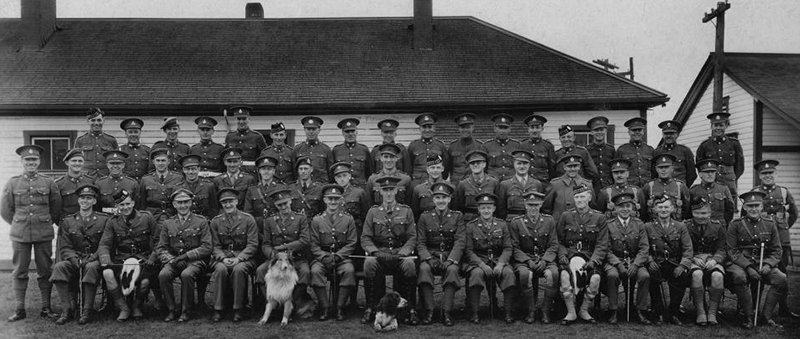
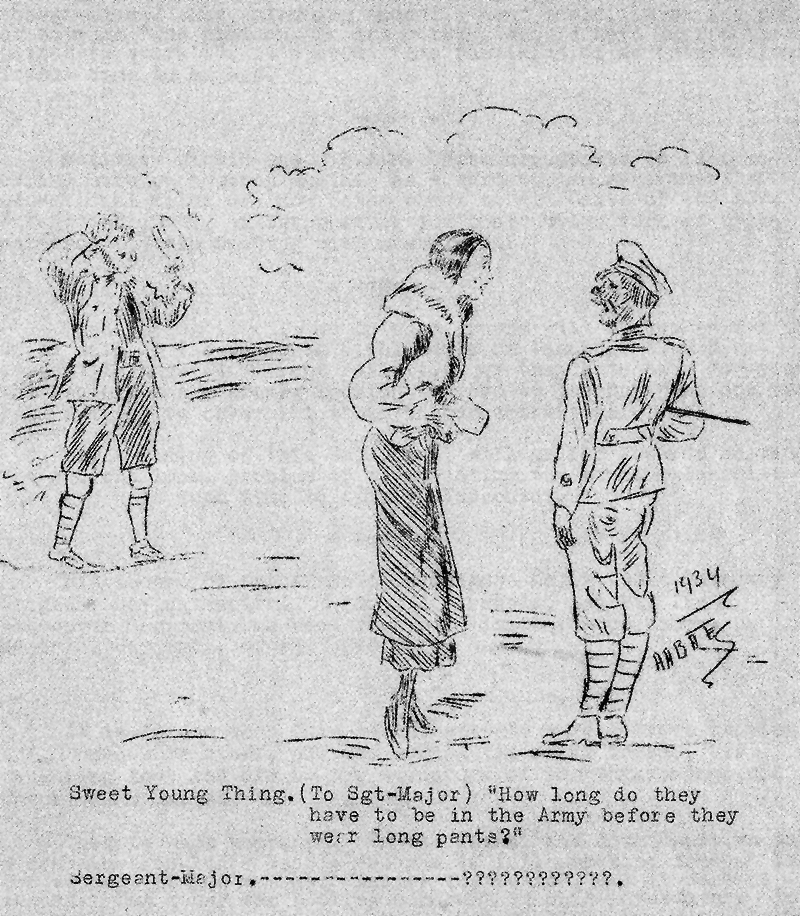
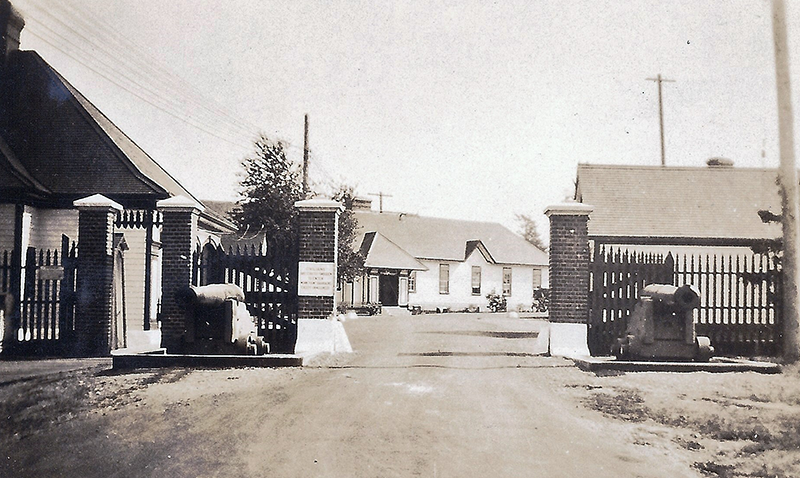
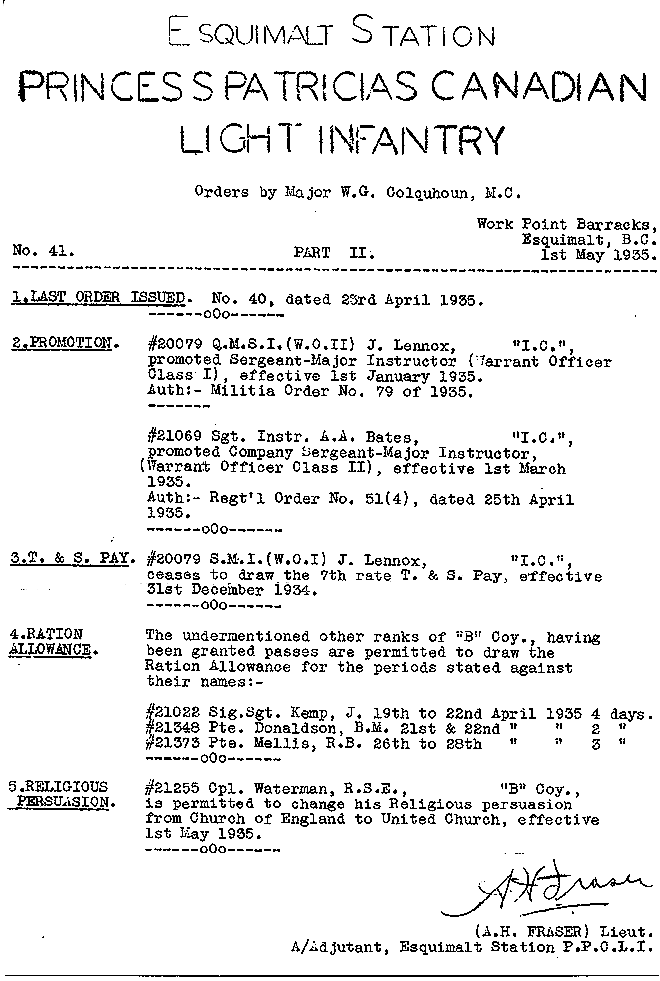

.png)